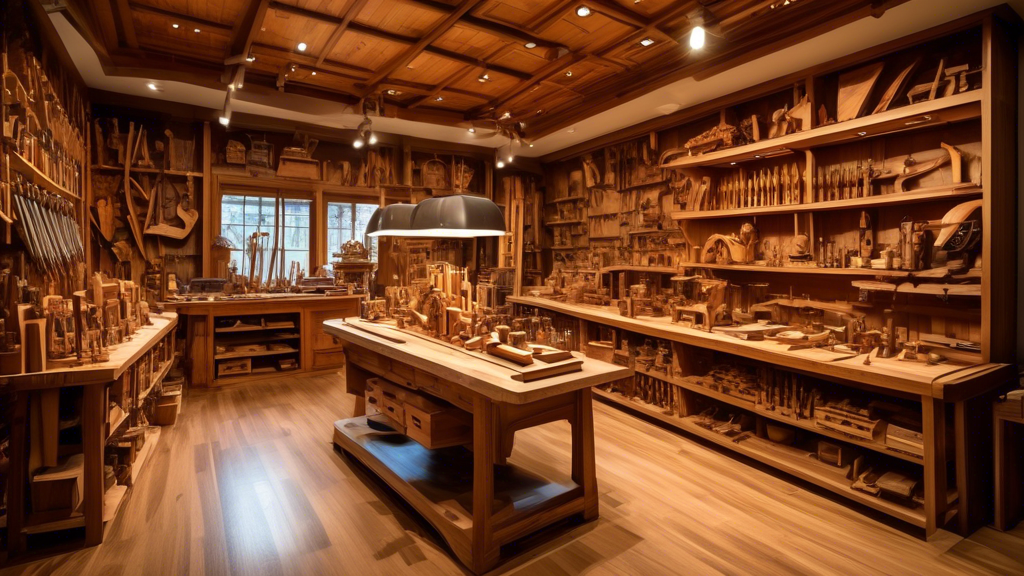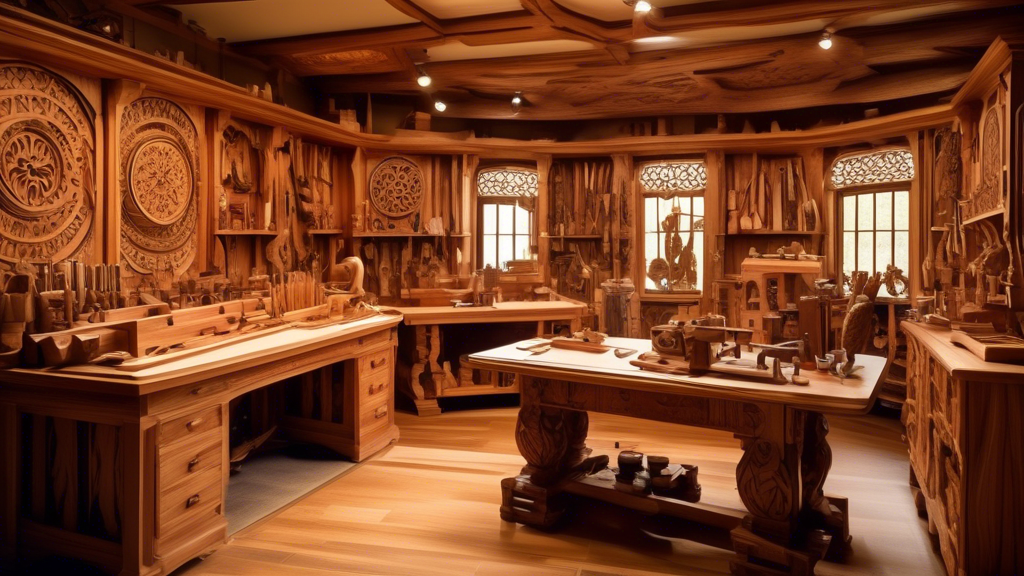Unveiling the Artistry of Custom Wood Work
If you’ve ever admired a beautifully crafted wooden table or a uniquely designed chair, then you’ve glimpsed the magic of custom wood work. This age-old craft, rich in history and versatility, has enchanted humans for centuries, transforming mere timber into art. From the ancient halls of kings to modern minimalist homes, custom wood work has evolved, adapting to the changing tastes and needs of each era. Unlike mass-produced furniture, these bespoke creations bring an unparalleled charm and individuality to any space, serving as tangible proof of the artisan’s vision and skill.
When you delve into the world of custom wood work, you discover a realm where creativity and craftsmanship merge. It’s not just about cutting and assembling pieces of wood; it’s about mastering techniques that have been honed over generations. Joinery, carving, and finishing are just a few of the intricate processes that go into creating a piece that is both functional and beautiful. This meticulous attention to detail requires not only a keen eye and steady hand but also a deep respect for the materials. From selecting the right type of wood to applying the final coat of polish, every step is a testament to the artisan’s dedication and expertise.
Whether you’re a seasoned woodworker looking to refine your techniques or a beginner just dipping your toes into sawdust, understanding the artistry behind custom wood work can inspire you to create pieces that are truly one-of-a-kind. So, let’s journey together into this wonderful world of woodworking, where each project starts with a simple piece of wood and ends up being something extraordinary.
Custom wood work, with its rich tapestry of history, is like a seasoned tree whose roots dig deep, yet branches stretch towards the infinite sky of creativity. Our journey takes us back in time, to when early humans first picked up rudimentary tools and turned nature’s bounty into something more—a piece of identity, a work of art. Imagine this: a prehistoric human, much akin to a modern DIYer who’s just discovered their first power tool, chipping away at a piece of wood to create the first custom-designed spearhead. Fast forward a few thousand years, and now we’ve got sophisticated masterpieces like Shakespearean stages and regal thrones, driving home the notion that wood work isn’t just functional but also ornamental.
As the centuries rolled by, custom wood work became a hallmark of craftsmanship. The Gothic cathedrals, with their awe-inspiring wooden arches and carvings, serve as splendid reminders of the skill and dedication involved. Picture it—wooden columns that mimic nature’s grand trees, supporting both faith and architecture. It was during the Renaissance that bespoke cabinetry and ornately carved furniture turned heads, representing both wealth and artisan craftsmanship. The history books might not say it outright, but I bet a furniture craftsman in 18th-century France had the same smug grin of satisfaction when he nailed a dovetail joint as we do now when a tricky project finally falls into place.
Now, let’s talk versatility, because that’s where custom wood work truly shines like a well-polished mahogany sideboard. The beauty of wood is that it’s adaptable—sturdy enough for constructing homes and delicate enough for intricate inlays on jewelry boxes. A humble block of wood can transform into a rustic dining table that becomes the heart of a home or a minimalist bookshelf that sparks joy with its clean lines.
Imagine walking into a room and feeling instantly at peace, your eyes wandering across a beautifully crafted wood piece that whispers stories of its creation. The custom elements—the hand-carved edges, the uniquely designed legs, or maybe a rich stain that highlights the grain—each of these features adds warmth and personality to a space. Wooden décor can be understated, like a joke that lands perfectly without effort, or bold, like an uncle’s dubious yet spirited dance moves at a wedding reception. Either way, it leaves a mark.
Even in today’s world, custom wood work has found its place amidst modern design trends. From sleek Scandinavian-inspired coffee tables to rustic farmhouse dining sets, wood is the chameleon of materials—it pairs effortlessly with metals, stones, and fabrics. Homes today, be they tiny apartments or sprawling estates, benefit from the uniqueness and bespoke beauty that custom wood work offers. It’s akin to the difference between baking a box cake and whipping one up from scratch—the latter always tastes a bit sweeter, don’t you think?
And for those of you just starting out in the magnificent world of sawdust and wood shavings, or seasoned veterans whose tool belts have seen every knot and grain, remember: custom wood work is your canvas. Mistakes might happen—like the time I turned a dining table into an unforeseen jigsaw puzzle—but with each hiccup, we learn, adapt, and ultimately create something meaningful. Keep those safety goggles on, the planers sharp, and the creativity flowing.
Click Here For The World’s Largest Collection of 16,000 Woodworking Plans

The Craftsmanship Behind Custom Wood Work: Techniques and Skills
Ah, custom wood work—the symphony of sawdust, the ballet of chisels, and the serenade of wood grain whispering tales of craftsmanship! Whether you’re a wide-eyed novice or a grizzled veteran of the woodworking world, there’s always a magical allure to creating bespoke wooden pieces. Today, we’ll dive into the various techniques and skills that transform humble pieces of timber into magnificent works of art.
The Marvels of Joinery: Fitting Wood Like a Puzzle
Joinery is the art of connecting two pieces of wood without nails, screws, or glitter glue (though we have to admit, that last option does sound fun). Imagine putting together a puzzle where all the pieces you’ve meticulously crafted are known as joints. You’ve got your dovetails, your mortise and tenons, and, for those who like to live dangerously, your half-blind dovetails—the bad boys of the joinery world.
For beginners, it’s perfectly okay to start with a simple joint like the butt joint. It’s reliable, straightforward, and frankly, doesn’t need much wooing. However, if you’re feeling spicy, why not try the dovetail joint? Picture your pieces of wood coming together with the elegance and precision of a well-tailored suit. Of course, precision is key—try to avoid the tragic ‘gap-tail’ joint that resembles more of a toothless smile than a snug fit.
Carving: Your Canvas Awaits!
Now, if you have ever felt the urge to carve your name into something other than your neighboring tree (Fido wouldn’t appreciate it), then carving is your calling. Carving is what brings personality and life to custom wood work. Think of it as drawing, but with wood shavings flying everywhere and a lot more risk of injury.
Start with a simple carving knife and a forgiving piece of basswood. Think of the moment when Michelangelo first gazed upon a block of marble. You, dear reader, hold the same potential with your block of wood! Want to try your hand at relief carving? It’s like sculpting, but only on one plane. Or dive into chip carving, a technique where you remove small chips from the wood to create intricate patterns—just be ready to find those tiny chips in your shoes later.
Finishing: The Grand Finale
No custom wood work project is complete without its swan song, which we call finishing. Think of finishing as the grand act of wood working; it’s like makeup for your wood piece—brings out its natural beauty without any of the smudging drama.
Selecting the right finish is like choosing the perfect outfit for your date night. You wouldn’t wear a tux to the beach, and similarly, your outdoor furniture shouldn’t be finished with indoor lacquer. For a natural look, consider using an oil finish. It penetrates deeply, enhancing the wood’s grain like a photographic filter—ideal for those Instagram-worthy posts!
Tools of the Trade: From Basic to Boss
The tools we wield are just as important as the skills themselves. As any seasoned woodworker would tell you, it’s not the size of the tool, but how you use it. Let’s start with the basics: a trusty saw, a hammer, and chisels. For the more adventurous, there’s the mighty lathe. Imagine a mechanical bull, but for your wood pieces. It spins wood so you can create symmetrical wonders like table legs and fancy pens.
If you’re working with Grandma’s old hand-me-down tools, fear not! Many masterpieces have been brought to life with little more than a well-loved hammer and some elbow grease. Just remember, it’s about the journey and what you create along the way.
Encouragement: When Wood Working Goes Sideways
Even with all the expertise in the world, every craftsman will hit a snag—or three. Picture it: you’re chiseling away, feeling like the world’s gift to woodworking, and suddenly your intricate carving shatters like a forgotten New Year’s resolution. It’s okay to have a blissful moment of despair before you clean up, regroup, and try again.
Take it from me, I once spent hours crafting a chair, only to find out that my measurements were more ‘abstract art’ than functional furniture! But such moments of creative chaos are not setbacks; they’re learning opportunities wrapped in the guise of a wooden Gordian Knot. Embrace them, woodworking family. You’ll soon find that the lessons from your mishaps are what pave the path to success more brilliantly than a thousand triumphs.
So, whether you’re working on your first birdhouse or an intricate piece of custom furniture meant to impress the in-laws, remember, we’re all in this sawdust-filled mess together. The beauty of custom wood work lies in its potential to surprise, delight, and sometimes baffle—we wouldn’t have it any other way!
As we bring our exploration of custom wood work to a close, there’s no denying that this timeless craft continues to enchant us with its historical roots and remarkable versatility. From intricately carved wooden panels that adorn ancient temples to lovingly handcrafted furniture that becomes an heirloom, custom wood work is a testament to human creativity and skill. It’s amazing to think how these pieces, with their unique charm and functionality, can transform any space into something special; they’re the proof that artistry and utility can seamlessly coexist.
The artisans behind these wood wonders, armed with their chisels, gouges, and a dash of patience, invest hours into mastering techniques like joinery, carving, and finishing. It’s akin to a magician revealing a rabbit from a hat—except here, it’s about revealing the potential hidden within a block of wood. Each completed project stands as a tribute to the precision and dedication of these craftsmen. It’s perhaps like a carefully choreographed dance, where every cut, carve, and polish is executed with the perfect blend of rhythms and motions, resulting in a masterpiece that tells its own story.
What’s truly inspiring is that the world of custom wood work welcomes everyone—from the novice just picking up their first dovetail saw, to the seasoned pro who can chisel out a cabriole leg in their sleep. Even when projects veer off-course, which could be more often than we’d like to admit (I once spent a week carving an ornate table leg only to realize it was a couple of inches too short—talk about a tall order!), these moments present learning opportunities. They remind us that the journey is as important as the destination.
So, whether you’re using a state-of-the-art CNC router to cut precision joints or a trusty hand saw you inherited from grandpa, remember that the true magic of custom wood work lies in the personal touch each of us brings to it. After all, it’s not just about creating items; it’s about sharing a piece of yourself through the grain of the wood. As you stand back to admire the gleaming finish of your latest creation, know that you’re part of a rich tradition that spans centuries—a tradition that’s still very much alive with your hands shaping its future. Keep carving, crafting, and above all, keep creating with heart.
Click Here For The World’s Largest Collection of 16,000 Woodworking Plans

